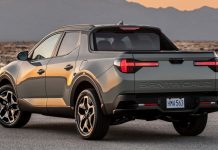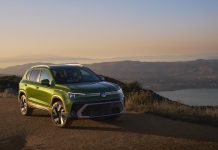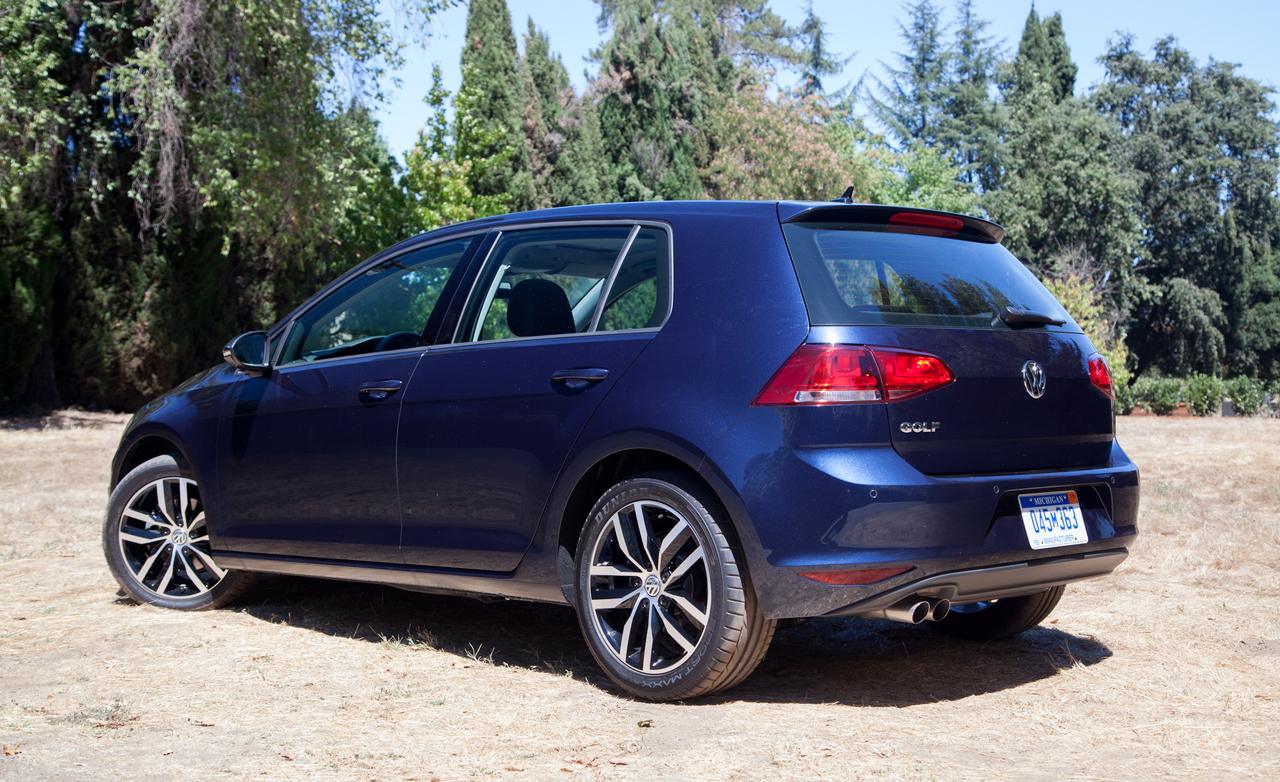Nissan’s Maxima wasn’t the first fast four-door — but it did help popularize the “four door sports car” concept back in the mid-late ’80s. At that time, most sedans were doughy family-type cars of the Caprice Classic/Nova/Dodge Diplomat/Ford Taurus type — with fake wire wheel covers, weak brakes overstuffed seats and underpowered engines. The Maxima’s powerful V-6, athletic suspension, driver-focused interior layout and (perhaps most important of all) available manual transmission presented an automotive oasis to buyers who had to have the extra pair of doors for family or work reasons — but didn’t want the middle-aged spread that tended to come with them.
Fast-forward to the present and the Maxima now has plenty of company. Sporty sedans with powerful engines, taut suspensions and good brakes are now the rule — not the exception. There are half a dozen excellent cars of this type to choose from — including standouts like the VW Passat and Audi A4 and the Mazda 6 and Subaru Legacy GT.
To keep the Maxima near the front of the ever-growing pack is the challenge; whether the changes Nissan’s made for 2007 help or hinder that is a call you’ll have to make.
The good news: Inside, you’ll discover a revised interior layout that would not be out of place in the 350Z. Central gauge cluster with big, easy-to-read gauges trimmed in brushed aluminum. An interesting dashpad shape adds to the streetfighter ambiance — two convex speed humps on the driver and passenger side with a distinctive scalloped section in the middle that seems like it might have been set aside for an optional gunsight and .50 caliber cannon. The driver and front seat passenger are each strapped in to their respective compartments like the side-by-side pilot/bomber in an A6 Intruder.
Backseat riders can feel part of the Mission, too — if you order the optional Elite Package that swaps out the standard three-across bench-type back seats for a pair of sport buckets with their own heaters and a center console with its own power point.
At $4,700 the Elite Package isn’t cheap — but the two-across rear seat layout is pretty unique and adds to the car’s sporting personality. Plus, you get a lot of other stuff, too — including a power rear sunshade, top-of-the-line stereo (320 watts, six-disc CD changer, MP3 capability, RDS and your choice of either XM or Sirius satellite radio capability), Xenon HID lights, heated steering wheel, sonar rear park assist, Bluetooth hands-free cellphone and, of course, leather trim.
The standard SE model ($28,050) also comes with 18-inch rims and performance tires, four-wheel disc brakes (with Brake Assist and Electronic Brakeforce Distribution, for extra confidence during high-speed/emergency-type stops), traction control and a neat Skyview fixed-in-place oversize glass roof section. It’s not a sunroof (and doesn’t open) so you won’t feel the breeze in your hair — but it makes up for that by letting in a lot of light, which really brightens up the interior and makes it feel more opened up (sort of like skylights do in your house).
Or choose the softer-sprung SL — which gets less aggressive tires mounted on 17-inch rims, wood trim (in place of the SE’s sport-themed metallic/brushed aluminum pieces) and Xenon HID lights.
For another $1,800 (on either trim level) you can order an in-dash GPS unit with one of the best layouts currently available. Unlike most GPS displays — which look just like electronic versions of standard road maps — this one projects your route in a way that lets you “see” the road ahead as if you were flying in an airplane a couple hundred feet up. Instead of looking down (and in one dimension) at squiggly lines, you look ahead toward your destination, with your forward horizon updating as you drive. This way of looking at things clicks in your head more readily than the standard GPS “map” format by helping orient you visually. You see where you are — and where you’re headed. All GPS units should be designed this way.
The bad news: No more manual transmission. For 2007, the Maxima comes only with a Continuously Variable Transmission (CVT) in place of the six-speed manual (and conventional 5-speed automatic) that were available last year. There’s no “shift shock” with a CVT — since there are no gears and so no gear changes — but the take-it-or-leave it CVT may put off buyers who consider a manual transmission the most essential component of a true sport sedan. It’s especially odd that Nissan would choose to take this step with the Maxima — which built its rep on being one of the first/few four doors that could be ordered with a stick.
It’s not going to help matters that the ’07 Maxima’s on-paper power output has been dropped by 10 horsepower, to 255 (from last year’s 265). The change in rating is due to new rules for measuring and reporting actual horsepower — and the ’07 Maxima’s 3.5 liter V-6 is the same engine as last year’s 3.5 liter V-6. But even though actual output hasn’t changed, it’s harder to brag about 255 hp than 265 hp — especially now that engines with around 250 hp are only middle of the pack.
Five years ago, 255 hp was pretty impressive. Now, however, it’s no big deal. The Hyundai Sonata has a 234-hp V-6. And the Toyota Camry’s 268 hp 3.5 liter V-6 outguns the Maxima by nearly 15 horsepower.
Nissan says the Maxima’s CVT — which is based on the unit that first appeared in the Murano SUV/crossover — has been adjusted to perform more aggressively but though the CVT has many virtues (it’s smoother, for one thing — and offers a potential fuel economy benefit for another) enthusiast drivers may miss things like screechy burnouts and being able to bang off tire-barking 1-2 upshifts. These are impossible with the CVT. Stand on the gas and the Maxima surges forward with authority, but some of the rawboned violence that ought to accompany the process is missing.
Maybe Nissan sees the Maxima as evolving into a luxury cruiser with some sporty qualities here and there. If so, the new CVT fits.
It’s an open question, though, whether Maxima traditionalists will approve.
Throw it in the Woods?









